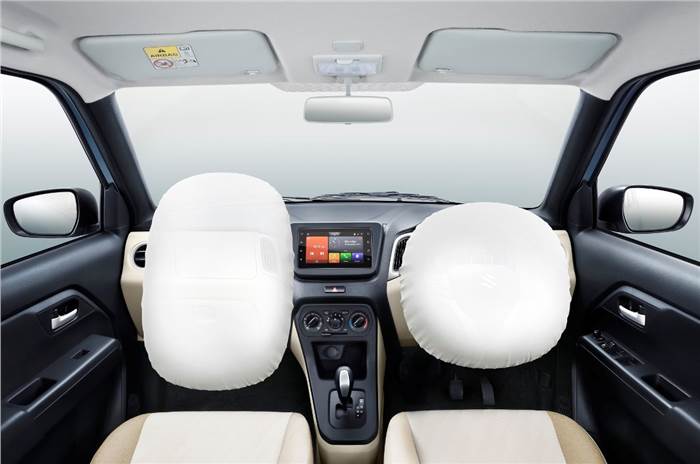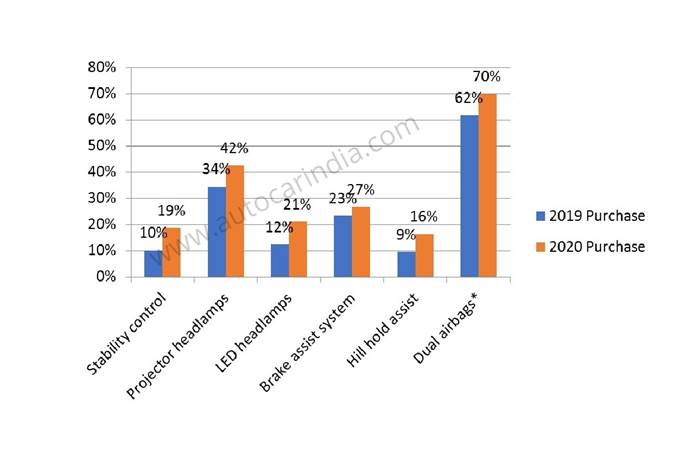Once a mere footnote in the Indian market, automotive safety has seen a steady rise in prominence. In October 2019, we saw the implementation of stricter crash test norms and with Global NCAP regularly subjecting Indian made cars to crash tests, awareness of automotive safety has certainly increased. And while it’s seen a massive spike in online discussions there’s also been an increase in actual buyer behaviour.
- Customers are showing an increasing inclination towards safety features
- Safety features are being made more common across the range
Data from automotive data specialists JATO Dynamics shows an increase in the uptake of non-mandated safety features in the previous year. For instance, 70 percent of the cars sold in 2020 were equipped with dual airbags, an 8 percent increase over 2019*.
Vehicles with stability control also saw an increase in sales with 19 percent of cars sold fitted with an electronic stability control system, compared to just 10 percent in 2019. Besides these features, other safety tech like brake assist and projector headlamps, too, has also seen an increase in adoption.
Ravi Bhatia, JATO Dynamics India president and director, said “while the uptake in these features is also due to their increasing availability across variants, it’s nonetheless encouraging seeing their market acceptance”.
Indeed, the increased availability of these features across variants has certainly helped increase their uptake, as has also the interlinking of some of these features with others offered on the car. For example, the increase in stability control can be attributed to an increase in the share of automatic transmissions with which it is often interlinked or embedded with.
However, while the increasing share of these non-mandated safety features may not be a direct 1:1 reflection of buyer sentiment, the trend of manufacturers offering these features on more variants, and buyers also not shunning away from them, is certainly an encouraging sign towards safer cars in India.
* Considered for vehicles fitted with dual airbags only, i.e., vehicles with 3 or more airbags not considered.
Also see:





Comments
Member Login
Personal Details
No comments yet. Be the first to comment.